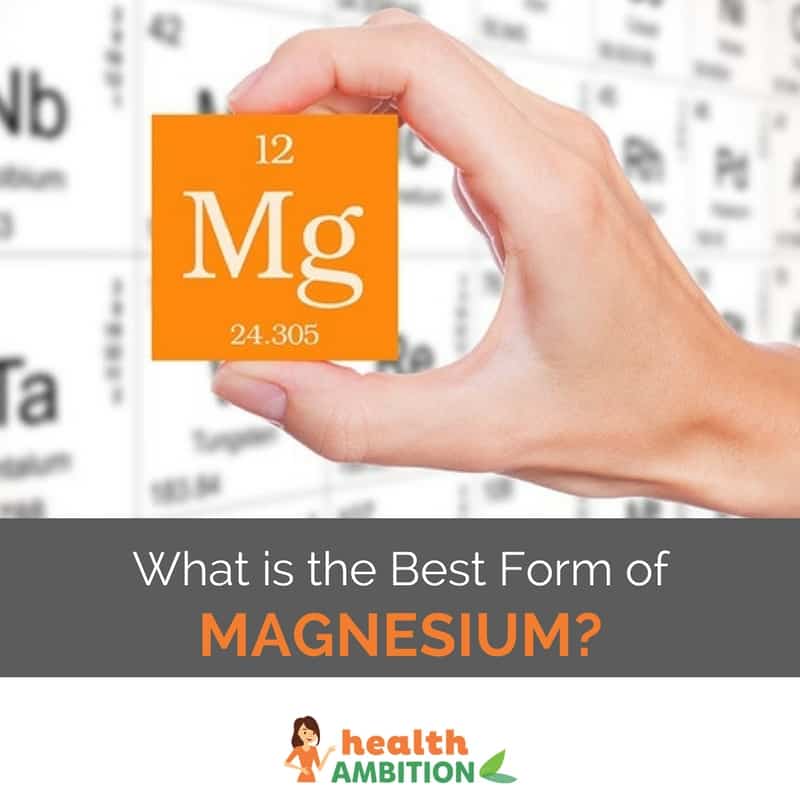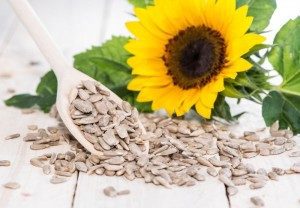
Magnesium deficiency is widespread and believed to be responsible for many health problems and diseases. Here is why magnesium is so important, ten of the richest food sources and how to choose the best magnesium supplement for improving your health.

Are You Low on Magnesium?
Magnesium is an essential mineral for good health. Like calcium, it is involved in maintaining strong bones but has many other important functions within your body, particularly in relation to your cardiovascular, muscular and nervous systems.
There are over 300 biological processes within the human body that rely on adequate levels of magnesium. Some of these include regulating blood sugar levels for stable energy, improving protein synthesis for healthy muscles, maintaining optimal nerve and brain function, normalizing blood pressure and heartbeat rhythm, sustaining the immune system and many other vital functions.
Unfortunately, despite its importance, magnesium is one of the most common minerals to be depleted in processed supermarket foods. Unless you regularly eat good amounts of certain natural foods, like the high magnesium examples ahead, and/or use an effective supplement, a lack of magnesium can play a part in many health issues.
According to current government statistics, around half of all people over 2 years old in the USA don’t get enough magnesium in their diet. Some estimates have low level magnesium deficiency as high as three quarters of the American population.
Compounding the problem, many commonly used forms of supplemental magnesium have low absorption rates and often have a laxative effect at high doses.
A new and superior form of magnesium supplement is available and covered ahead, but first let’s look at some magnesium rich foods well worth adding to your diet to prevent deficiency.
10 Foods High in Magnesium
1. Pumpkin Seeds
 Pumpkin seeds are an excellent source of magnesium with just an ounce of the tasty green seeds providing nearly 40% of the recommended daily intake of magnesium.
Pumpkin seeds are an excellent source of magnesium with just an ounce of the tasty green seeds providing nearly 40% of the recommended daily intake of magnesium.
Raw pumpkin seeds like these US grown ones are much better than the cheap Chinese seeds. They make a tasty snack that is rich in other minerals like manganese and zinc, full of protein to really fill you up and provides many other health benefits.
2. Sunflower Seeds
 Another healthy seed that’s very high in magnesium, sunflower seeds are also rich in vitamin E, folate and phytosterols. All of these nutrients make them great for cardiovascular health, though once again they are better eaten raw.
Another healthy seed that’s very high in magnesium, sunflower seeds are also rich in vitamin E, folate and phytosterols. All of these nutrients make them great for cardiovascular health, though once again they are better eaten raw.
3. Dark Leafy Greens
Also a good source of calcium and antioxidant carotenoids, dark leafy greens like spinach, Swiss chard and kale are all rich in magnesium.
4. Fish
 Oily fish like mackerel, pollock and tuna contain magnesium and are full of protein and omega-3 fats. It’s worth considering taking chlorella when you eat large fish like these as it can help protect against heavy metals by binding to them in the digestive tract.
Oily fish like mackerel, pollock and tuna contain magnesium and are full of protein and omega-3 fats. It’s worth considering taking chlorella when you eat large fish like these as it can help protect against heavy metals by binding to them in the digestive tract.
5. Beans
White beans, French beans, navy beans and kidney beans are all good sources of magnesium, though you may want to soak them overnight before cooking to reduce the starch raffinose that causes excessive gas.
6. Oats
 Natural rolled oats are relatively high in magnesium and combined with pumpkin seeds or sunflower seeds in a homemade muesli would be a good way to get more of the mineral into your diet.
Natural rolled oats are relatively high in magnesium and combined with pumpkin seeds or sunflower seeds in a homemade muesli would be a good way to get more of the mineral into your diet.
7. Cashew Nuts
Creamy cashew nuts make a healthy snack and are high in magnesium, along with copper and zinc for healthy hair.
8. Dark Chocolate

A personal favorite, dark chocolate, when at least 70% or above, is a good source of magnesium. The high levels of sugar and additives in regular milk chocolate negates a lot of the benefits so the darker the better if you want your chocolate healthy.
9. Figs
Whether fresh or dried, figs are a delicious source of magnesium and a great way to get a lot of beneficial dietary fiber as well.
10. Quinoa
 Most packaged grain foods like bread can no longer be considered a good source of magnesium as processing removes most of the mineral. A very healthy grain replacement, quinoa is a pseudo-grain that is gluten-free and boasts high magnesium amongst its many nutritional benefits.
Most packaged grain foods like bread can no longer be considered a good source of magnesium as processing removes most of the mineral. A very healthy grain replacement, quinoa is a pseudo-grain that is gluten-free and boasts high magnesium amongst its many nutritional benefits.
Unless you eat these kinds of foods regularly it’s worth considering a good magnesium supplement to deal with the high demands of our modern lifestyle and help replace the magnesium that has been stripped from our food supply. But what is the best form of supplemental magnesium and can some of the inferior kinds cause unwanted side effects?

What is the Best Magnesium Supplement to Take?
Common forms of magnesium supplements that have been used for decades in multivitamins are now being shown to have extremely poor absorption rates.
Magnesium oxide in particular has very low bioavailability, estimated at only around 4%. Additionally, at high doses it can have a strong laxative effect.
Magnesium carbonate is another form that has relatively low bioavailability and again can result in loose stools if taken in excess or if you are sensitive to its effects.
In recent years supplement manufacturers have begun bonding magnesium to other substances like amino acids for improved delivery. These versions of supplemental magnesium like magnesium arginate and aspartate, or magnesium citrate derived from the magnesium salts of citric acid, have lower concentrations of magnesium but much improved absorption rates.
For optimal bioavailability though, the best magnesium supplement to take is a new form called magnesium orotate. Made from the mineral salts of orotic acid, magnesium orotate has been demonstrated to effectively penetrate cell membranes and deliver beneficial magnesium ions at a cellular level.
Orotates are used by the body to create DNA and research shows that magnesium and other minerals like calcium bonded to them are the most readily absorbed in the human body.
This magnesium orotate is formulated based on that research and while more than other forms of magnesium supplements, it is likely to be much better absorbed by your body without the gastrointestinal problems of cheaper forms.
It is best taken with breakfast and again at dinner and with 200 tablets per bottle should last for several months.
Ideally, magnesium should be balanced with a good supply of calcium in your diet so I’d recommend also reading about calcium rich foods and the best form of calcium supplement and considering taking these two vital minerals together.
Leave a comment